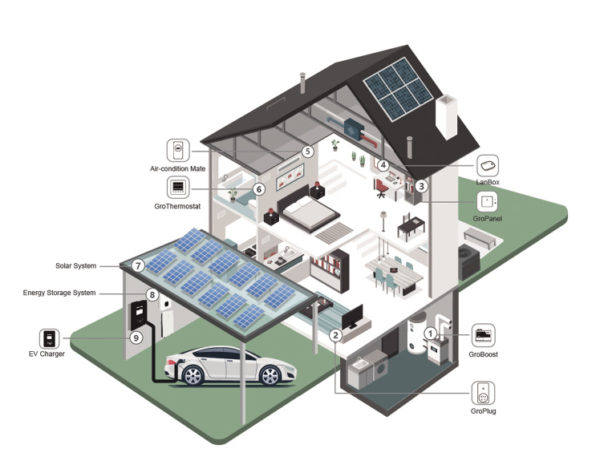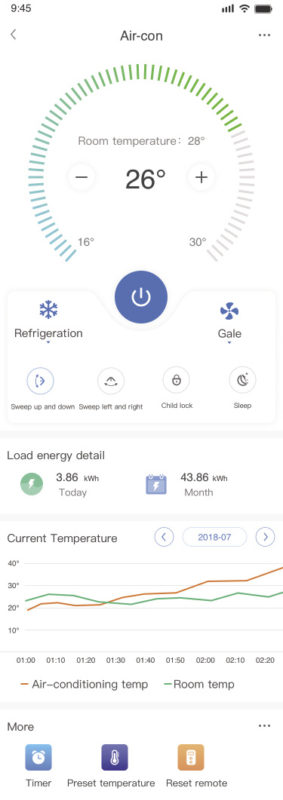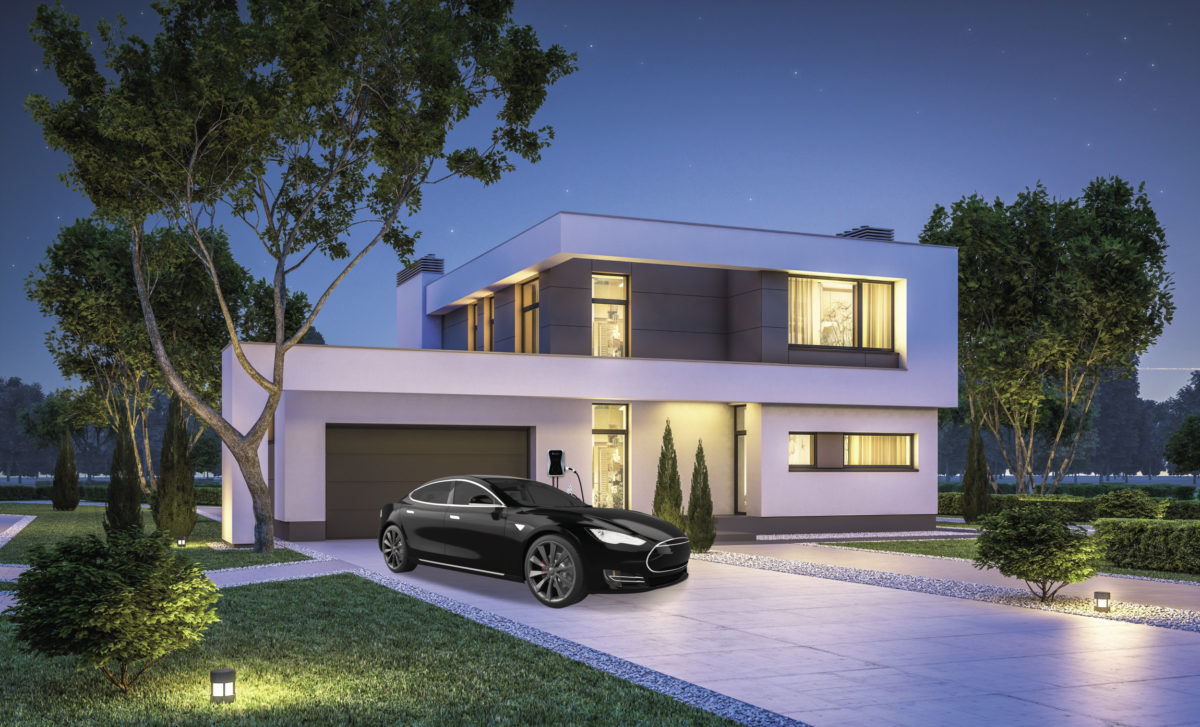Residential and commercial energy unit generators stand in the epicentre of the new era of communications-enabled girds and the two-way power flows management. The emerging question for households and businesses alike is where the new energy future stands.
Today, this trend is enforced by the current regulatory response to lowering solar PV system costs. Where distributed energy generation was once mandated by state support schemes (most notably the feed-in tariff remuneration mechanism that has provided a stable income to rooftop PV owners for all generated electricity), nowadays regulators are mandating a market-based approach.
Under the new market approach, distributed energy resource (DER) projects are remunerated solely for the amount of electricity exported onto the grid, usually for a very low export rate. But the latter is not always guaranteed. For example, many countries apply self-consumption schemes, which allow households to generate solar energy for their own consumption but not remunerating any potential exporting power to the grid. The more that self-generated solar power is self-consumed, the more a household or small business solar PV system becomes profitable. So, what is the most optimal and profitable way to use solar power? And how can producers consume more of the self-generated solar energy?
Matching operations with information technology
Energy analysts agree that the answer to these questions is going to involve a more integrated, smart offering that includes solar systems combined with energy storage, electric vehicles (EV) charging, heating, demand response, and energy efficiency.
The UK’s Renewable Energy Association (REA) is actively campaigning “to develop decentralized systems that include more than just solar power systems, energy storage, and EVs,” says Frank Gordon, head of policy at REA. “We have called for more renewable and clean technologies to be included in the Future Homes Standard [a policy package] linking up not only power and transport, but also heat from 2025.”

Photo: Growatt
Growatt’s GroHome solution is doing exactly this: It integrates a solar PV energy system with energy storage, EV chargers, water heaters, and internet-of-things (IoT) devices – such as a smart plug, thermostats, and air-conditioning units.
During optimal sunlight hours, the solar energy will be consumed by the household appliances automatically through IoT devices. Sometimes the surplus solar energy will not be consumed fully, and in these cases, it can be stored into the battery storage system for consumption at a later time. This power could even be transferred into thermal energy as usable heat, to increase the rate of self-consumption considerably.
The GroHome solution brings the role of distributed generation to the forefront of the energy transition. It bridges together all the hardware – such as solar modules, inverters, battery storage, and smart appliances devices – and the software, such as smart monitoring apps. GroHome integrates the hardware and software, matching operational efficiency with the information technology in a unified, consumer-friendly system. Growatt achieves this through remote controls, smart energy management, multi-zone controls and a hotkey app.
The GroHome solution
Homeowners are able to remotely control, turning on and off, the household appliances linked to the GroHome system. The smart energy management system provides GroHome owners the opportunity to advance smarter living. For example, garden lights can be turned off automatically at 6AM when your alarm rings. The GroHome multi-zone control function allows for customers to smartly monitor the different areas of a house, establishing a customized energy model for each area, to employ the most intelligent energy saving strategy. And lastly, ShinePhone, the Growatt hotkey app, gathers all previously logged functions in gadgets and allows the app user to control the household appliances with a single touch.
A complex series of IoT devices reinforces these processes to make the GroHome smart solution possible. Compared with a traditional switch, the wireless GroPlug and GroPanel remotely calculate power consumption of the connected appliances. Similarly, the GroThermostat is used to control the temperature of the floor or water heating system, to keep a room and household at comfortable temperatures whilst minimizing energy use. Lastly, Air-condition Mate, provides remote control opportunities for air conditioners and even a power consumption analysis.
All in all, the GroHome solution provides homeowners a combination of intelligent solar energy generation with energy efficiency – increasing a household’s rate of PV power self-consumption, while reducing the household’s overall energy consumption – to achieve 100% green energy powering their homes.

Photo: Growatt
Fully clean: moving to 100%
Growatt puts forth a key strategy with its GroHome system: To link solar energy with household IoT devices to support a zero export model of solar power to the grid. When solar panels generate more energy that a household is consuming at a given moment in time, GroHome will automatically activate a homeowner’s smart IoT appliances to avoid unnecessary export of self-generated power to the grid and instead use the extra power to charge the home’s appliances. This strategically reduces electricity bills and leads to a greener household.
Savings and environmental benefits can be further optimized with GroHome’s software if battery energy storage, EV charging, and thermal energy storage are also employed alongside the PV system. Batteries store surplus power during the day and make it available for consumption at night, and EVs can support the green mode transportation and also be used as an additional larger storage option. Additionally, thermal storage heaters such as electric boilers also typically have enough capacity to store a portion of surplus solar energy as usable heat.
Bringing it together
To take a practical example, when a battery system has been fully charged during sunlight hours and the solar panels continue generating energy, instead of exporting the surplus power to the grid for a low export tariff or even for free, a GroPlug will be activated automatically to power or control pumping water to the swimming pool, the washing machine, or other household appliances. At a later time, if solar power is insufficient, the battery system will discharge to supply power for loads. As a result, parts of consumption could be shifted from evening times to hours of sunlight.
Moreover GroBoost, one of GroHome’s processes, can also convert the surplus solar energy to usable heat. While a homeowner would typically set up the timer of the electric boiler to be powered during night tariffs for saving electricity, GroBoost can intelligently control heating elements to provide hot water in boilers. In the presence of an EV charger, the GroHome system can utilize the surplus energy to charge the EV any time of the day. All this activity, with both solar energy storage and IoT device usage, is graphically demonstrated via the ShinePhone app, depicting the energy flows, clear energy data, and the status of GroHome appliances.
What does this mean for the future of rooftop PV? The forecast is looking smart. Communities around the world have begun exchanging and trading electricity in a peer-to-peer mode. As the world’s energy systems become more decentralized, and export tariffs become lower, homeowners are stepping up in their power. And GroHome households will be better equipped to reap the benefits of the digital future and trading patterns.
This content is protected by copyright and may not be reused. If you want to cooperate with us and would like to reuse some of our content, please contact: editors@pv-magazine.com.
